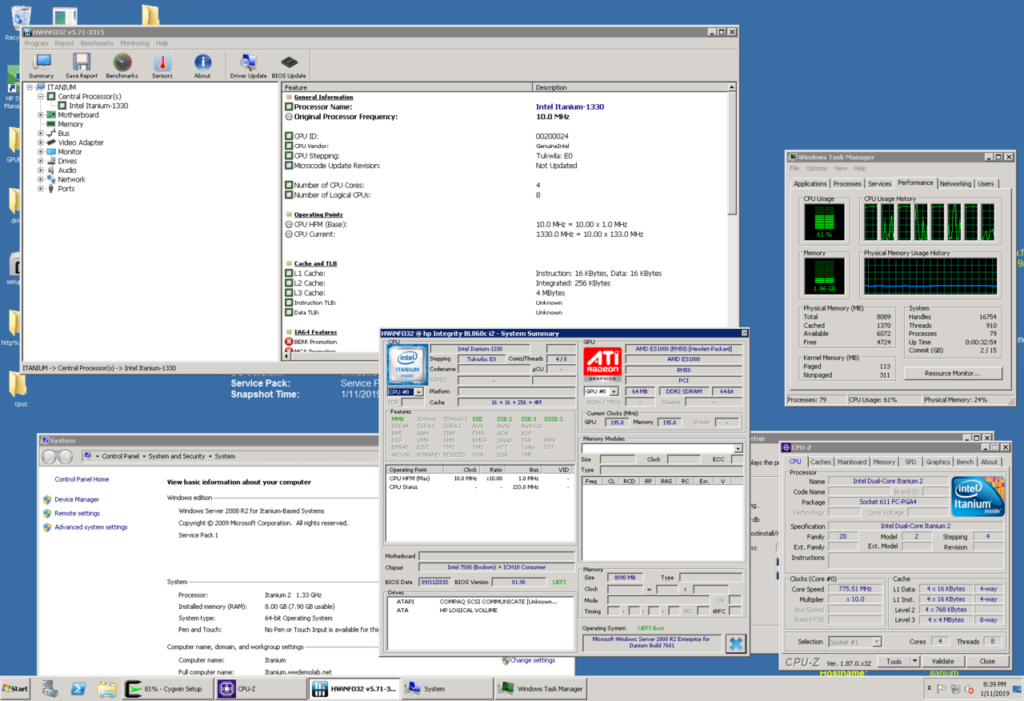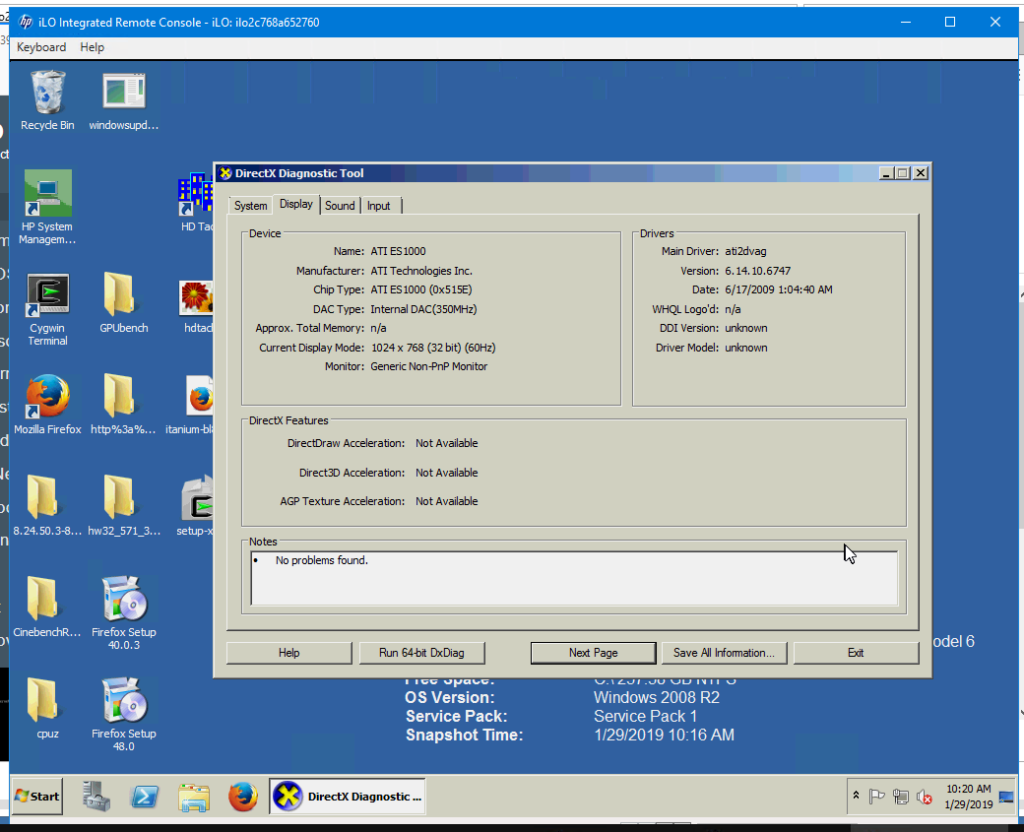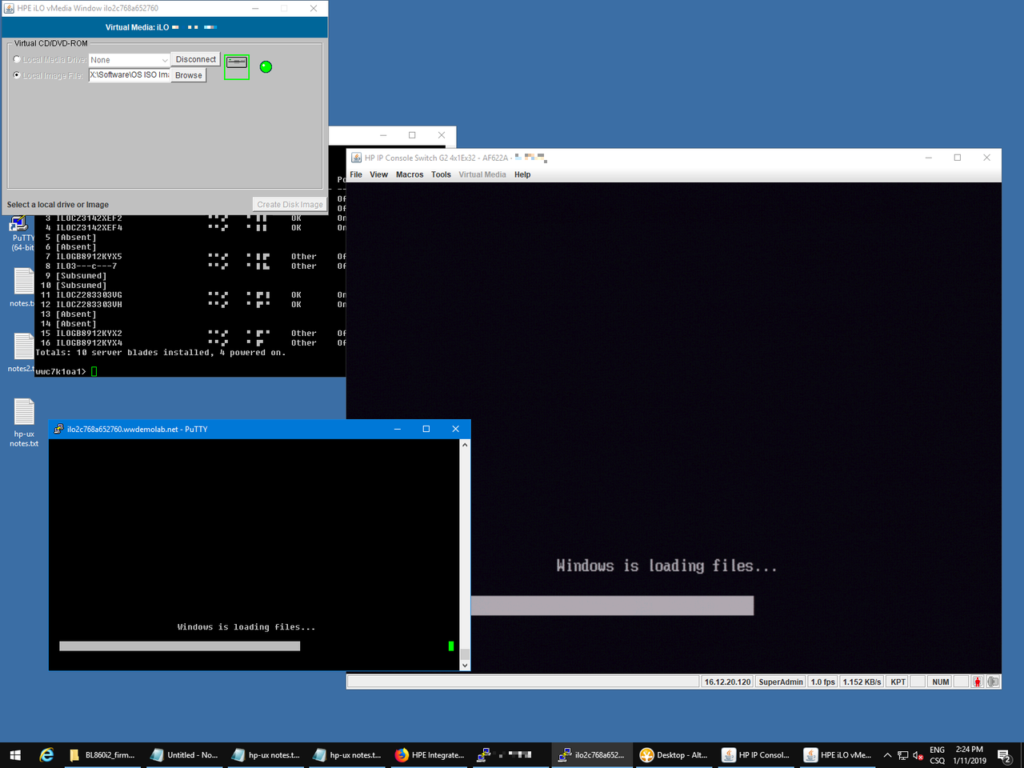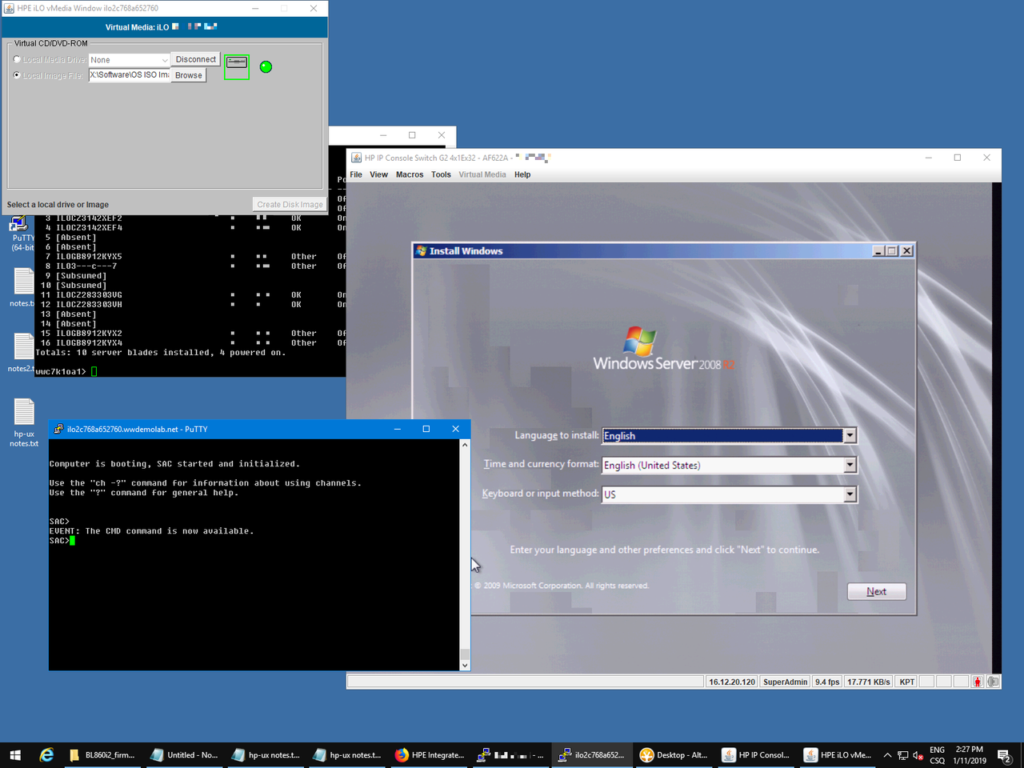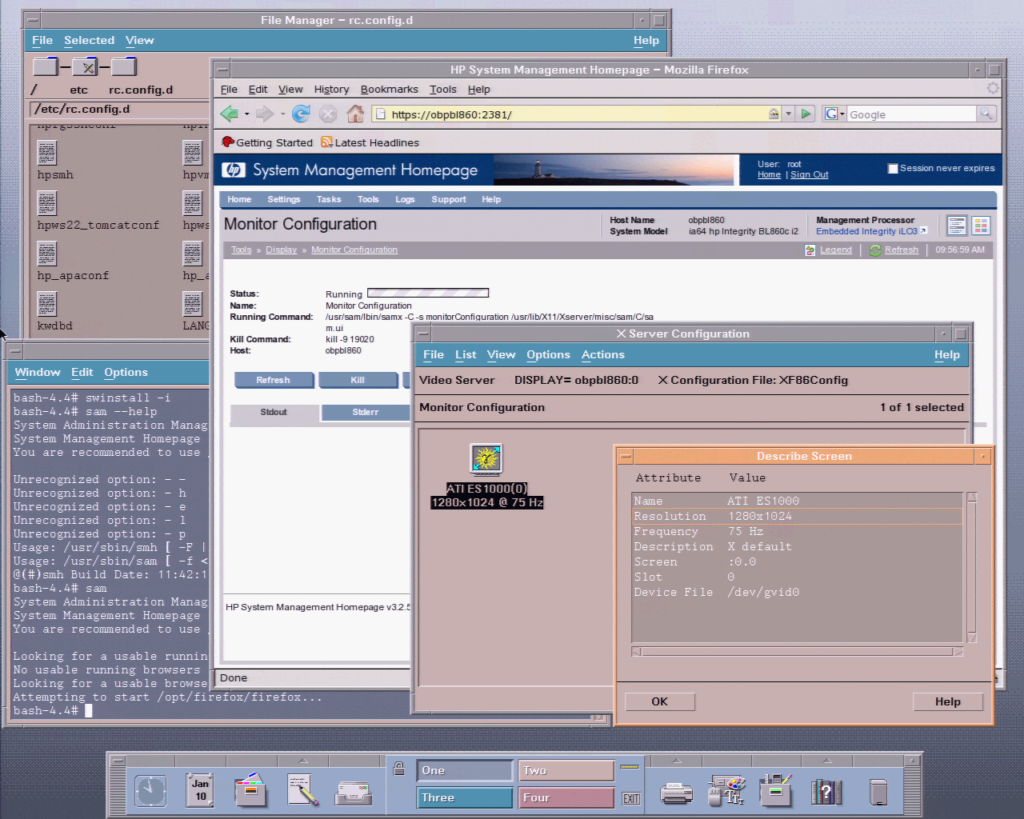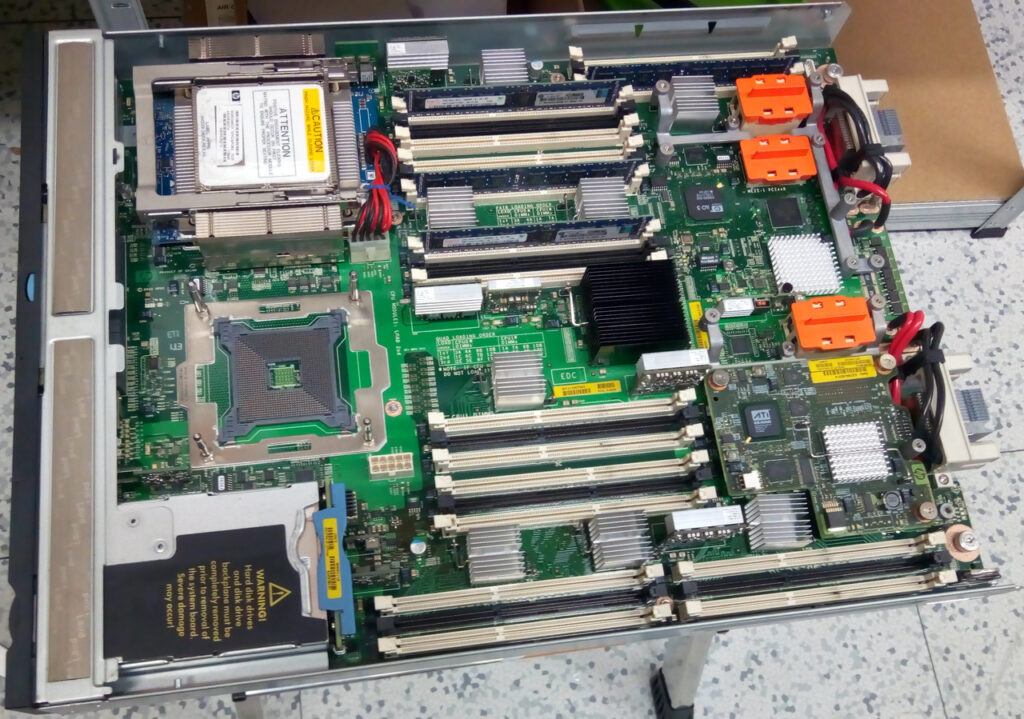Fun With Intel Itanium
It might be surprising for somebody, but Itanium-based systems are still being used today. You cannot see them in a form of a standard office PC though. They are hidden in large datacenters, doing some serious stuff running on HP-UX or OpenVMS.
I have one HP Integrity BL860c i2 blade server (manufactured in 2010) in our lab and there was recently some time to play with it a bit. I played a lot with HP-UX before (even with PA-RISC machines) so the obvious next step was to install the last version of Windows Server for Itanium. It has a built-in x86 emulator written by guys from Intel and it is possible to transparently run standard 32bit x86 applications along with native ones. It is not very different from current ARM-based Windows devices.
Some simple emulated applications can achieve 50-70% of CPU performance. However, other applications (especially those with GUI) are super-slow. It takes ages to load a web page in emulated Firefox. The quad-core 1.33-GHz Itanium 9320 received only 0.38 pts in the Cinebench R11.5 multi-threaded test (32bit x86, 8 threads). That is similar to a single core of a five years old in-order Intel Atom processor.
It was expected to access Windows Server 2008 (R2) for Itanium no other way than using RDP. Therefore, there is literally no graphics acceleration implemented in the ATI driver (the chip is based on the ATI Radeon 7000 core).
The support for Itanium in Windows was discontinued in 2010.
